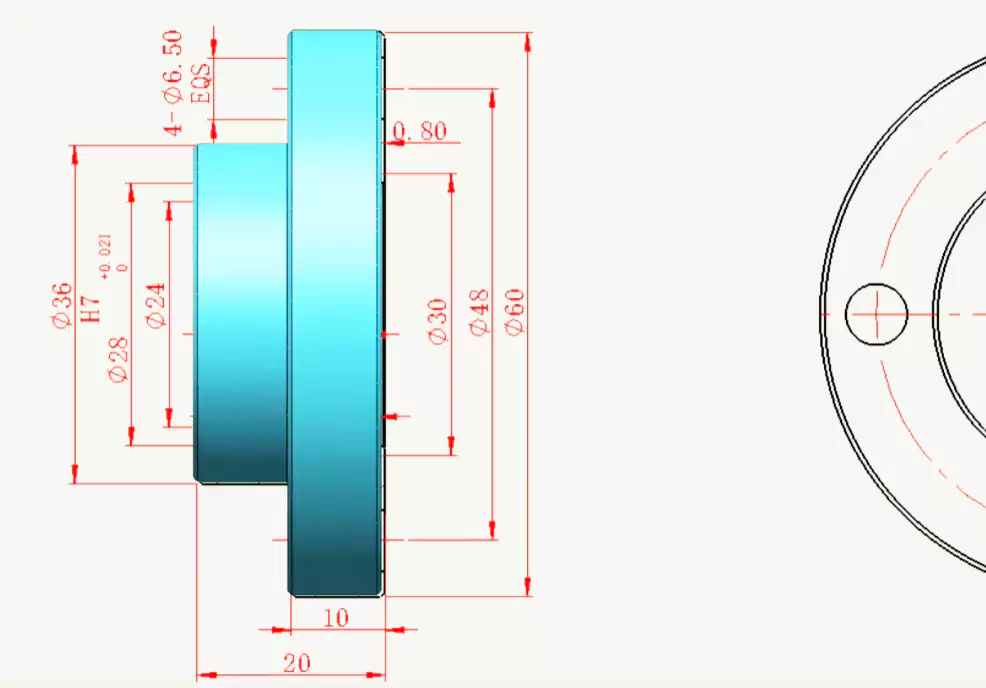Tolerance is a fundamental concept in mechanical engineering that defines allowable variations in specified dimensions. It plays a pivotal role in assuring the functionality of the final product, especially in the context of larger assemblies.
In situations where appropriate tolerances are not established in critical areas, components may fail to align with the intended design due to inherent inaccuracies introduced by various manufacturing methods.
Conversely, the determination of suitable tolerances empowers manufacturing companies to concentrate their efforts on specific aspects of the production process. This meticulous attention to detail can be the deciding factor between achieving perfectly fitting components and ending up with unusable scrap material.

What is Engineering Tolerance?
Engineering tolerance encompasses an acceptable range of variation in measurements derived from a base measurement. Tolerances are applicable to various units, including linear, angular, and other physical dimensions, as well as other domains like temperature and humidity.
Regardless of the unit of measurement, a tolerance sets a permissible range around the nominal or base value. For example, consider the design of a sieve aimed at separating 3.5 mm pebbles from 2.5 mm pebbles. To ensure that only the smaller pebbles pass through the sieve while retaining the larger ones, a nominal hole diameter of 2.8 mm might be set. However, due to manufacturing precision, some holes may measure at 2.6 mm.
By establishing a lower limit of -0 mm and an upper limit of +0.3 mm, it can be ensured that all holes have diameters ranging from 2.8 mm to 3.1 mm, creating the required tolerance zone or tolerance range.
Types of Tolerance
Engineering tolerances come in several types:
1. Dimensional Tolerance & Geometric Tolerance
Dimensional Tolerance: This type pertains to permissible variations in the size or dimensions of a component, ensuring it fits and functions within the specified parameters, typically expressed in linear measurements like length, width, height, diameter, or thickness.
Geometric Tolerance: Geometric tolerance regulates the form, orientation, and position of features on a component while allowing variations in shape, angles, and location. Subtypes include form tolerance (for shape variations), orientation tolerance (for angles and orientations), position tolerance (for location deviation), and profile tolerance (for surface profile variations).
2. Surface Texture Tolerance
This type governs the acceptable variation in surface texture, encompassing factors like surface roughness, waviness, and lay, which affect the functional or aesthetic properties of a component.
3. Material Property Tolerance
Material property tolerance considers the acceptable variation in the physical or mechanical properties of materials used in engineering designs, covering aspects like tensile strength, hardness, elasticity, conductivity, or thermal expansion.
4. Assembly Tolerance
Assembly tolerance specifies permissible variations in the fit, alignment, or mating of components during assembly. It ensures that parts can be correctly assembled and function as intended when combined.
Considerations When Setting Tolerances
Tolerances carry financial implications, as extremely tight tolerances can raise costs, while overly loose tolerances can hinder performance. For instance, when designing an RC helicopter, determining the tolerance for the main shaft’s straightness involves evaluating how deviations affect vibration, how the shaft is manufactured, and the failure rate for different tolerance ranges. A balance is struck to maintain manageable vibration while facilitating cost-effective production.
Setting tolerances requires meticulous consideration, factoring in design requirements, engineering standards, manufacturing processes, design for manufacturability, statistical analysis, tolerance stack-up analysis, tolerance allocation, design verification, and prototyping. Documenting tolerances and embracing a culture of continuous improvement are also vital.
Tolerance Management and Control
Tolerance management encompasses the establishment of acceptable limits for product dimensions, features, or parameters. It considers design tolerances, statistical analysis, manufacturing processes, inspection and quality control, and cost considerations.
This iterative process also includes ongoing improvements, as feedback from manufacturing, inspection, and customer experiences inform adjustments to ensure products meet performance expectations while balancing cost constraints.
